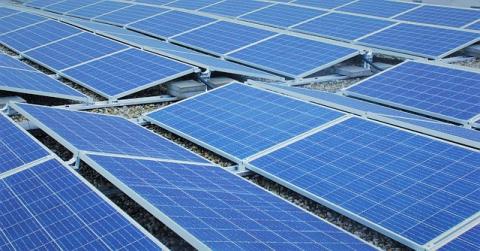
Region: East Asia and Pacific (EAP)
Country: United Kingdom
Keywords: PPP Tools *, Toolkits **, United Kingdom, Renewable Energy
Document Link(s):
Document Summary:
Introduction - This toolkit has been produced to help community groups to develop renewable energy projects. 'Groups' may be an informal collection of like-minded individuals wishing to start something in their community; or may be well-established, constituted organisations linked to a community facility (e.g. village hall or community centre) or with a wider purpose (e.g. Development Trust).
It does not assume any detailed knowledge of the topic and so allows you to decide where to start - whether this means looking at the basics of energy generation and use, or at specific detail of a particular renewable energy technology.
Document Details:
*Also in Introduction: Community needs; Your Community's Requirements; A range of possibilities
Section 1: Energy, Renewable Energy and Carbon Basics
1.1 Energy basics
1.1.2 Energy rating
1.1.3 Energy consumption
1.1.4 Energy generation
1.2 Renewable energy basics
1.2.1 What are the useful sources of renewable energy?
1.2.2 Can we get free heat and power?
1.2.3 How, in practice, does it compare with using traditional energy sources?
1.3 Carbon Calculations - basics
1.3.1 Carbon (C) or Carbon Dioxide (CO2)?
1.3.2 Is carbon dioxide the only greenhouse gas?
1.4 Renewable energy and carbon emission3
1.5 Community relevance
Section 2: Energy Efficient Buildings
2.1 Assessing Heat Loss and Insulation Requirements
2.1.1 What is Heat Loss?
2.1.2 How do we assess heat loss?
2.1.3 How can we minimise heat loss?
2.2 What is the Heat Load of a Building?
2.3 Defining options
2.4 Options - an initial guide
2.5 Planning applications and Building Regulations
3.1 Solar water heating
3.1.1 Evacuated tubes
3.1.2 Flat plate collectors
3.1.3 Appropriate areas for solar panels
3.1.4 Checklist for solar thermal panels
3.2 Photo voltaic panels
3.2.1 Checklist for solar PV panels.
3.3 Wind energy - small wind turbines
3.3.1 Supplying power using wind energy
3.3.2 Heating using wind energy - Direct heating from wind
3.3.3 Checklist for wind turbines
3.4 Biomass Heating
3.4.1 Wood pellets
3.4.2 Wood chips
3.4.3 Logs
3.4.4 Checklist for Biomass
3.5 Heat Pumps
3.5.1 Efficient use of heat pump systems
3.5.2 Ground Source Heat Pumps ( GSHP)
3.5.3 Water Source Heat pumps ( WSHP)
3.5.4 Air source heat pump ( ASHP)
3.5.5 Checklist for heat pumps
3.6 Exhaust air heat recovery ( EAHR)
3.7 Wave and Tidal Power
3.8 Accredited Installers
3.9 Income from FITs, ROCs and RHIs
4.1 Overview
4.2 Determining the Energy Source
4.3 Project Management and contractual issues
4.3.1 Checklist of Key points for district heating
4.4 Future directions
4.4.1 Combined Heat and Power Plant ( CHP)
4.4.2 Anaerobic Digestion ( AD)
4.4.3 District Wind to heat
Section 5: Off - Grid Solutions
5.1 Current off-grid Solutions
5.2 Defining your requirements and options
5.3 Building or small scale off-grid solutions
5.4 Community scale off-grid solutions
Section 6: Generating and Selling Electricity- Community Ownership
6.1 Strengthening communities through renewable energy projects
6.2 Community consultation
6.3 Developing a community energy project
6.3.1 Wind energy basics
6.3.2 Wind turbine technology
6.3.3 Hydropower basics
6.3.4 Hydropower technology
6.4 Resource and feasibility assessment
6.4.1 Wind specific assessments
6.4.2 Wind resource monitoring
6.4.2 Hydro specific assessments
6.4.4 Hydro resource monitoring
6.4.5 Land ownership
6.5 Finalising the legal structure for managing the project
6.5.1 Avoiding conflicts of interest
6.6 Project Design
6.7 Planning permission
\6.8 Environmental Assessment
6.9 Licensing of Hydro projects
6.10 Grid connection
6.11 Project costing and financial planning
6.12 Negotiating the supply of a turbine
6.12.1 Wind
6.12.2 Hydro
6.13 Financing a revenue generating project
6.14 Construction of project
6.14.1 Wind
6.14.2 Hydro
6.14.3 Long term operational issues
6.14.4 Key learning points from actual community projects
7.1 Role of commercial renewable energy developments
7.2 Private commercial ownership with financial community payments
7.3 The development control process
7.4 The nature of commercial wind farm development
7.5 Establishing a community benefit payment scheme
7.5.1 Engage in the development process
7.5.2 Make clear contact with the developer
7.5.3 Investigate options for managing community benefit payments
7.5.4 Organise formal meetings to negotiate community benefit
7.5.5 Community benefit payment processing and a community organisation
7.5.6 Finalise an agreement
7.5.7 Prepare a good development plan
7.6 Mixed ownership and investment
7.6.1 Part ownership of the wind farm
7.6.2 Community Share Offer for a Royalty Instrument stake in a windfarm
Section 8: Organisation, Consultation and Development Planning
8.1 Why and how to be organised
8.2 Community Consultation
8.2.1 Why is it essential?
8.2.2 How much community consultation is required?
8.2.3 How to carry out consultation on larger projects
8.3 Community development plans
8.3.1 Why create a community development plan?
Section 9: Financing your Project
9.1 Financial support from Government incentives
9.1.1 Feed-In Tariff (FIT)
9.1.2 Renewable Heat Incentive (RHI)
9.1.3 Pre-development and planning preparation
9.2 Financing larger-scale projects
9.2.1 Financing Scenarios
9.3 The Co-operative Model
9.4 A note on 'State Aid'
Annex 1: Further Information (PDF)
Annex 2: CaseStudies (PDF)
ISBN 978 0 7559 1975 8 (Web only publication)
Updated: